- Home
- The Summer Garden
- Summer Perennials P-Z
Summer Perennials P-Z
The list of great choices for summer perennials continues . . .
Penstemon
Penstemon digitalis, foxglove or white beardtongue, Zones 4-8. Penstemon digitalis is a North American native. Penstemon makes a good summer perennial for the border because of its drought tolerance, in fact, overly wet soils, especially in winter will shorten its life, so full sun and excellent drainage are important. The species has white tubular flowers with green leaves, but several cultivars have been developed for larger flowers and interesting foliage. ‘Husker Red,’ the 1996 Perennial Plant of the Year®, has white flowers with reddish foliage, ‘Dark Towers’ has pink flowers with redder foliage than ‘Husker Red,’ ‘Onyx and Pearls’ has pale flowers set off by dark purple foliage.
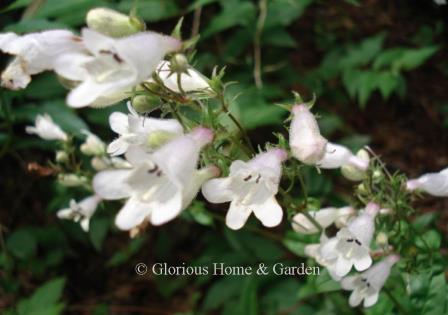 Penstemon digitalis
Penstemon digitalis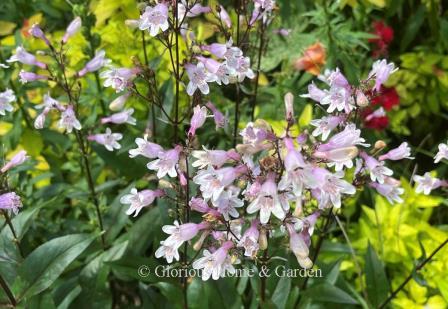 Penstemon digitalis 'Husker Red'
Penstemon digitalis 'Husker Red'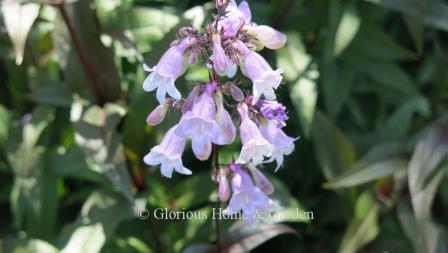 Penstemon digitalis 'Pocohantas'
Penstemon digitalis 'Pocohantas'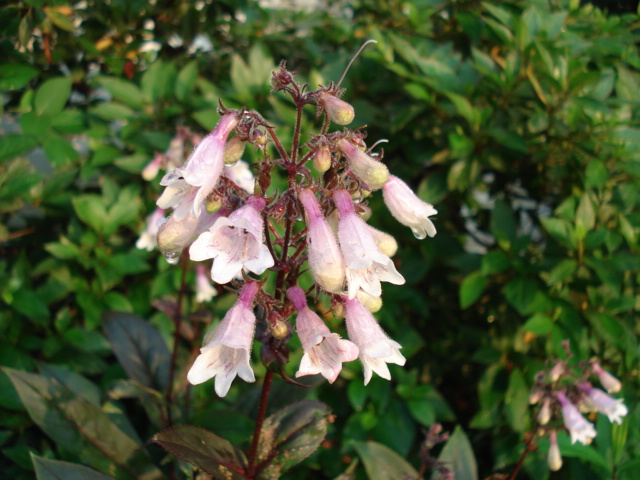 Penstemon x 'Dark Towers'
Penstemon x 'Dark Towers'Penstemon x gloxinoides, bearded tongue, Zones 5-7. The flowers of this hybrid penstemon are large and resemble gloxinia flowers, hence the name. These are beautiful plants that prefer cooler temperatures, full sun and excellent drainage.
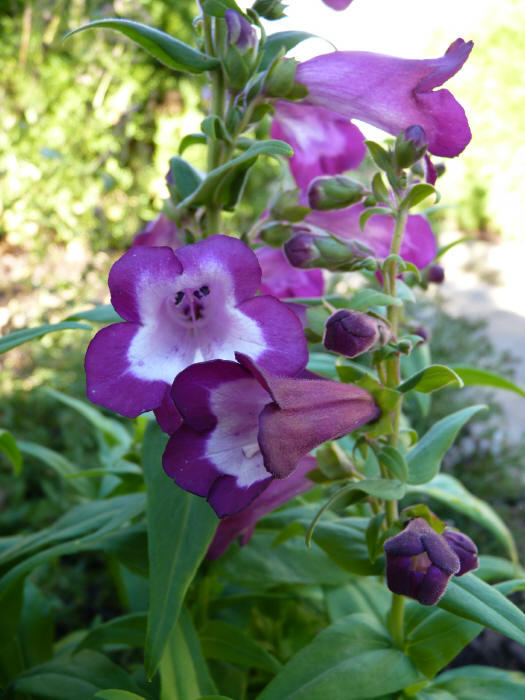 Penstemon x gloxinoides 'Phoenix Violet'
Penstemon x gloxinoides 'Phoenix Violet'Perovskia atriplicifolia, Russian sage, Zones 5-9. Russian sage has a sort of gauzy effect in the summer perennial garden with it finely-textured silver-gray leaves and misty blue flowers. The long blooming season from mid-summer into October makes it a valuable garden addition. It grows 3-5’ tall, but you’d never know it due to its floppy tendencies. The leaves are aromatic when rubbed. Grow Russian sage in full sun with excellent drainage to prevent winter rot in wet soils. Cultivars have been bred to help overcome the floppiness and to fit into smaller spaces. ‘Little Spire’ grows to about 24-29” and holds itself upright; ‘Rocketman’ has a good upright habit to about 36”; and ‘Silvery Blue’ is more compact at 18-20” with lavender-blue flowers. Perennial Plant of the Year® for 1995.
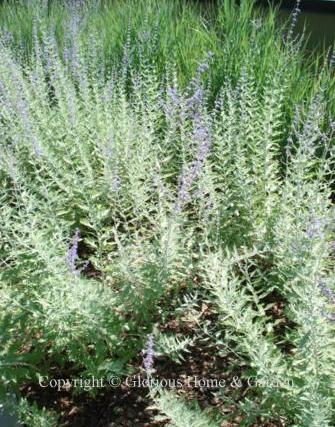 Perovskia atriplicifolia
Perovskia atriplicifoliaPersicaria amplexicaulis, mountain fleece, Zones 4-7. This perennial caught my eye when I spotted it recently at the Berkshire Botanical Garden in Stockbridge, MA because I haven't seen it growing in the Atlanta area. It really stood out against a dark background with its little bottle-brushes of crimson flowers rising above a sea of green leaves. Long bloom period from summer into fall.
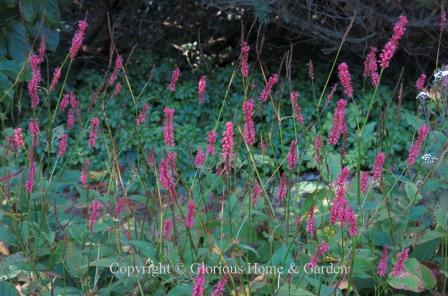 Persicaria amplexicaulis 'Firetail'
Persicaria amplexicaulis 'Firetail'Phlox
Phlox paniculata, garden phlox, Zones 4-8. There are certain perennials that define a season. For me, the star of the summer perennial border is Phlox paniculata. With its large flower heads, tall stature, and long bloom season, phlox is a natural as the nucleus of the border. Garden phloxes prefer full sun, and adequate moisture with good drainage.
Phlox has many virtues, but is unfortunately susceptible to powdery mildew. Choosing mildew-resistant varieties, good ventilation, avoiding wetting the leaves when watering and scrupulous garden clean-up practices help curtail powdery mildew.
The color range of garden phlox is wide including white, pink, salmon, red, lavender and purple. Some favorite cultivars include ‘Bright Eyes,’ pink with darker eye ; ‘David,’ white with good mildew resistance (and 2002 Perennial Plant of the Year) ; ‘Eva Cullum,’ pink, also with good mildew resistance ; ‘Franz Schubert’ is a lovely lavender-pink with lighter edges ; ‘Glamour Girl,’ coral ; 'John Fanick,' pink with darker pink eye; ‘Laura,’ purple with white eye ; ‘ Lord Clayton,’ red ; ‘Robert Poore,’ deep pink ; and ‘Younique Old Blue,’ which has the distinction of blue flowers with white centers. There are even some with variegated foliage such as ‘Creme de Menthe’ with white variegated foliage and white flowers, ‘Nora Leigh’ also has white variegated foliage and the flowers are white with pink eye ; and ‘Shockwave,’ with yellow and green foliage and lavender-pink flowers.
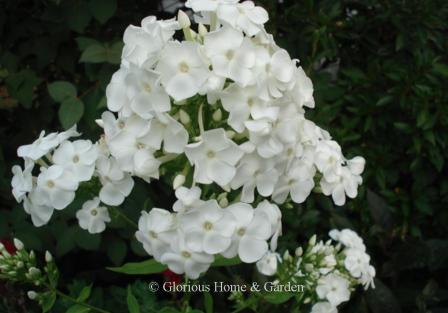 Phlox paniculata 'David'
Phlox paniculata 'David'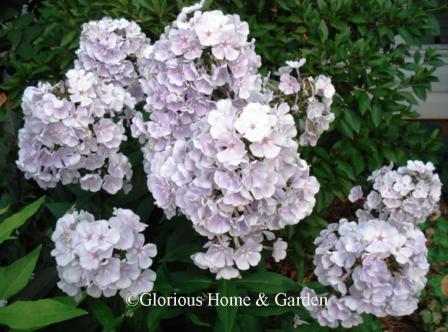 Phlox paniculata 'Franz Schubert'
Phlox paniculata 'Franz Schubert'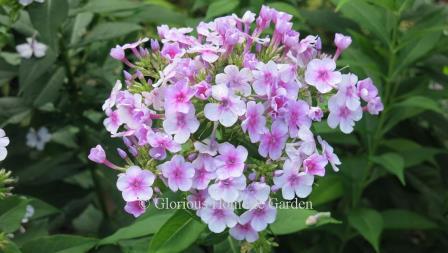 Phlox paniculata 'John Fanick'
Phlox paniculata 'John Fanick'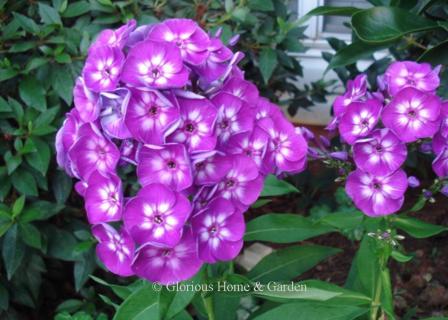 Phlox paniculata 'Laura'
Phlox paniculata 'Laura'Platycodon grandiflorus, balloon flower, Zones 3-8. Balloon flower is one of the most fun of the summer perennials, and they fascinate children. The buds form and swell as they get larger and larger with all five petals joined at the tip until they burst open. The blue, pink, or white flowers have a long bloom period from June until late summer and even into fall, especially if deadheaded. The foliage often turns to yellows and reds in autumn adding additional seasonal interest to the garden. They are a bit slow to emerge in the spring, so patience (or maybe marking the spot) will prevent accidental digging up. The species and taller cultivars will need to be staked to prevent becoming ground covers (as has happened in my garden with ‘Fuji Blue’ and ‘Hakone Double Blue’).
Cultivars include ‘Fairy Snow,’ white w/blue veining to 12”; ‘Florist Pink’ with single pink flowers to 31”; ‘Fuji Blue’ which grows to about 18-24,’ but still requires staking at least in my garden. There is also ‘Fuji Pink’ and ‘Fuji White.’ ‘Hakone Double Blue’ with deep blue double flowers to about 24” tall; ‘Mariesii’ is shorter at 14-18” with blue flowers; ‘Sentimental Blue’ is a shorter still at 6-12” with single blue flowers
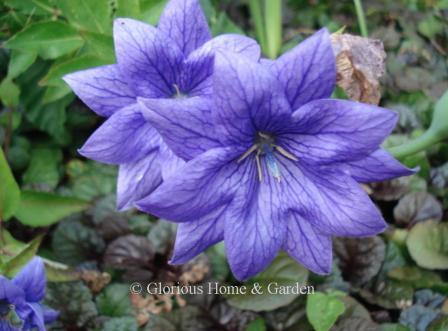 Platycodon grandiflorus 'Hakone Double Blue' Platycodon grandiflorus 'Hakone Double Blue' |
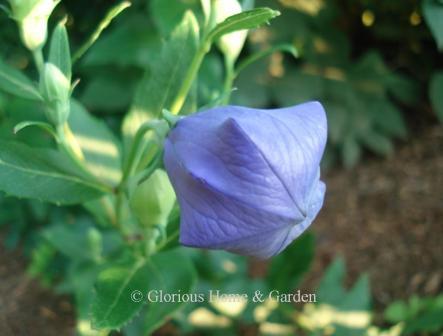 Platycodon grandiflorus 'Mariesii' Platycodon grandiflorus 'Mariesii' |
Polygonum affinie, persicaria, Himalayan fleeceflower or knotweed, Zones 5-8. Also known as Persicaria affinis, fleeceflower is a semi-evergreen to evergreen ground cover that forms a dense mat of foliage as it creeps over the ground. Spikes of rosy-pink flowers bloom from late spring until fall, when the leaves turn bronze. Great for edging, borders and as a ground cover under shrubbery.
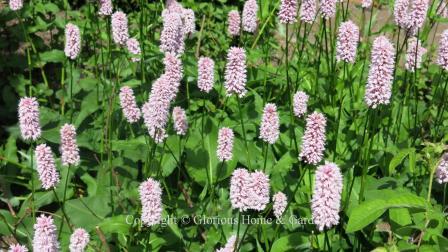 Polygonum affine 'Superba' (Persicaria affinis 'Superba')
Polygonum affine 'Superba' (Persicaria affinis 'Superba')Rudbeckias-Coneflowers
Rudbeckia fulgida, orange coneflower or black-eyed Susan, Zones 3-8. Orange coneflower, R. fulgida, is a native wildflower of the Southeastern U.S. that grows in a variety of soils with adequate moisture and full sun. One seldom encounters the species for sale in nurseries today because a couple of varieties and cultivars are superior. R. fulgida var. deamii is one such. It forms a handsome clump of large dark green leaves from which arise self-supporting stalks of about 2-3’ high loaded with bright yellow daisy-like flowers with dark centers. When in bloom from July to September, it is the star in my garden. It’s fun to watch goldfinches balancing on the stems picking out the ripe seeds. Another variety is R. fulgida var. sullivantii, especially its popular compact clone ‘Goldsturm,' named the 1999 Perennial Plant of the Year®.
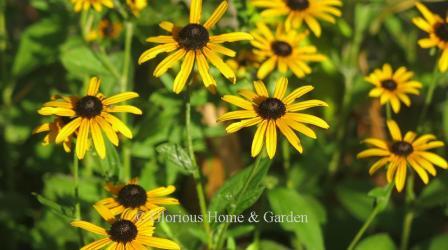 Salvia fulgida var. deamii
Salvia fulgida var. deamii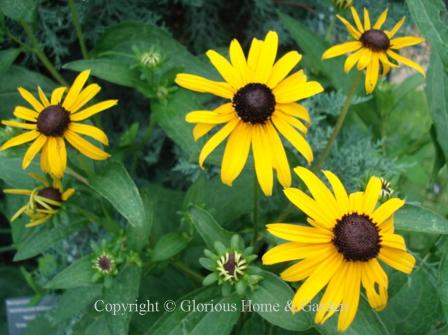 Rudbeckia fulgida var. sullivantii 'Goldsturm'
Rudbeckia fulgida var. sullivantii 'Goldsturm'Rudbeckia maxima, giant or cabbage-leaf coneflower, Zones 5-9. Towering over other summer perennials at up to 8’, giant coneflower makes a statement in the summer-to-fall garden. The bright yellow down-turned petals set off the elongated black cones to great effect. Let the ripe seed-filled cones stay on the plants as a feast for goldfinches and other small birds. Giant coneflower makes an attractive clump with blue-green leaves. Try combining it with other sun-loving summer perennials like echinacea, asters, bee-balm, Joe Pye weed, and grasses.
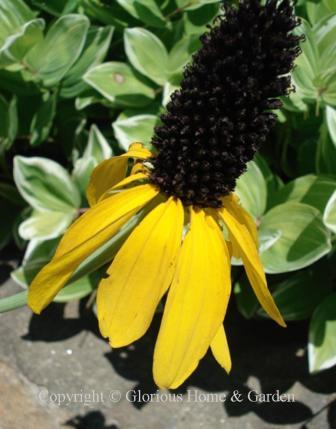 Rudbeckia maxima
Rudbeckia maximaSalvias
Salvia argentea, silver sage, Zones 6-8. Silver sage is a biennial or short-lived perennial that is grown mainly for its beautiful scalloped soft silver leaves like lambs’ ears. It forms a mound of about 24” x 12” and makes a wonderful contrast in solor and texture with other perennials. Flower spikes form in the second year and can be allowed to self-seed, or offshoots can be separated and planted to replace the mother plant. Full sun and excellent drainage is a must to prevent rot.
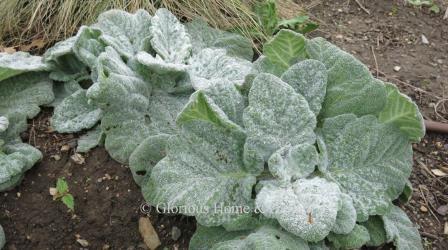 Salvia argentea
Salvia argenteaSalvia greggii, Texas sage or autumn sage, Zones 7-10. Salvia greggii is a native to Texas and Mexico that thrives in heat, humidity and dry conditions—thus it is perfect for xeriscape gardens. This woody evergreen makes a small shrub about 1-3,’ and benefits from pruning to keep it tidy. The tubular flowers are wildly popular with hummingbirds, too, but the scented leaves keep the deer at bay. Colors are available in white, pink, peach, red and purple. 'Wild Watermelon' is shown below.
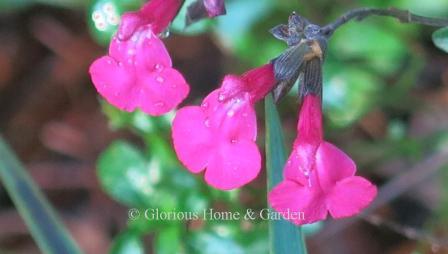 Salvia x Heatwave 'Brilliance'
Salvia x Heatwave 'Brilliance'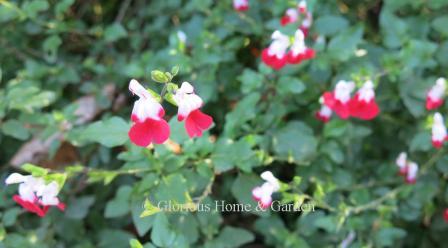 Salvia microphylla 'Hot Lips'
Salvia microphylla 'Hot Lips'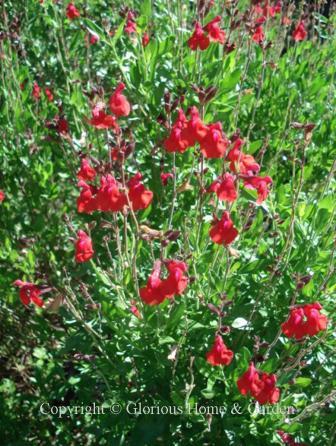 Salvia greggii 'Wild Watermelon'
Salvia greggii 'Wild Watermelon'Salvia guaranitica, blue anise sage, Zones 7-10. 'Black and Blue' is an excellent cultivar with intense blue flowers and deeper blue, nearly black, calyxes. This subshrub can get huge--as much as 6' tall--and starts blooming in late spring, takes a bit of a rest in the hottest part of the summer (for me, anyway), and resumes in late summer and continues until stopped by frost. The cooler temperatures seem to intensify the deep blue color. ‘Amistad’ (purple), ‘Argentina Skies’ (light blue), and ‘Black and Bloom’ are other good selections. Beloved by hummingbirds
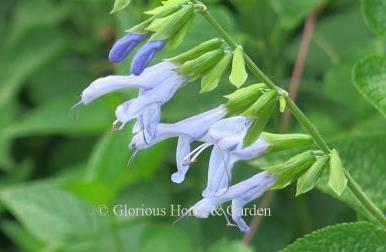 Salvia guaranitica 'Argentina Skies'
Salvia guaranitica 'Argentina Skies'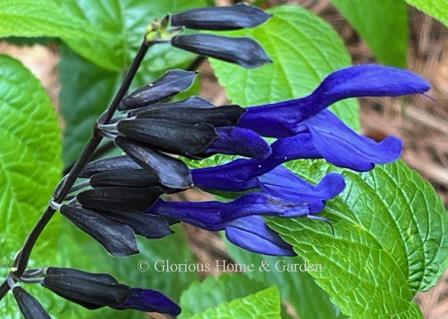 Salvia guaranitica 'Black and Blue'
Salvia guaranitica 'Black and Blue'Salvia x ‘Indigo Spires,’ ‘Indigo Spires’ salvia hybrid, Zones 7-10. This is one of my all-time favorite garden plants. I’m a sucker for blue anything, and ‘Indigo Spires’ delivers outstanding intense indigo blue all summer and gets even better in the fall where it keeps going until frost. In addition, the stalks, which would normally be about 3-4’ tall if straight up, bend and twist into interesting waving shapes that add a special charm. ‘Indigo Spires’ is said to be a natural hybrid between S. farinacea and S. longispicata. ‘Mystic Spires Blue’ is another good choice.
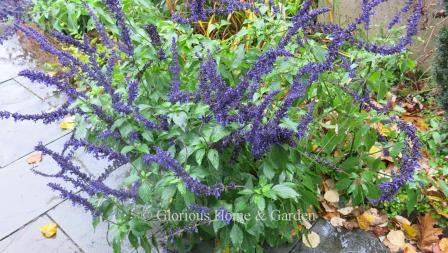 Salvia x 'Indigo Spires'
Salvia x 'Indigo Spires'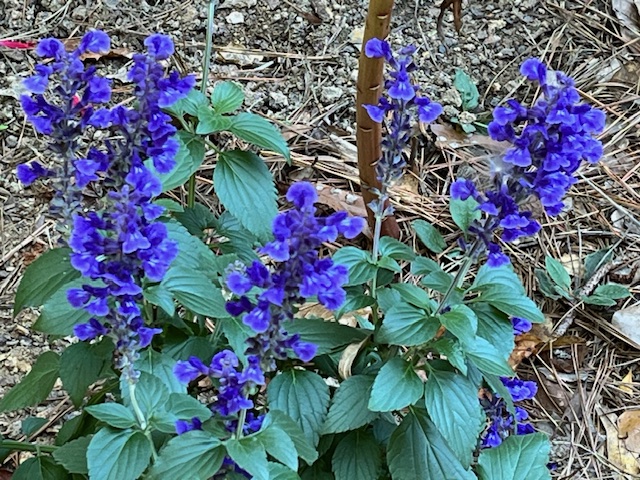 Salvia x 'Mystic Spires Blue'
Salvia x 'Mystic Spires Blue'Salvia x jamensis, jame sage, Zones 7-11. Jame sage is a naturally occurring hybrid between Salvia greggii and Salvia microphylla, both from Mexico. It does best in full sun in well-drained soil and loves the heat of summer and is drought tolerant. Some good cultivars include ‘Dancing Dolls’ with rose and pink bicolored flowers; ‘Elk Lemon Light’ with light yellow flowers; ‘Full Moon’ with cream and rose flowers; VIBE® ‘Ignition Purple’ with intense purple flowers and a long bloom period is an excellent introduction from Monrovia.
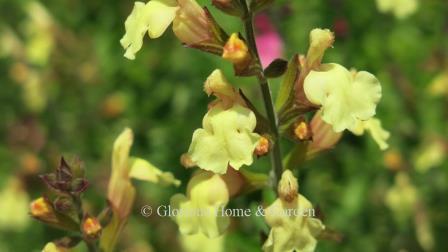 Salvia x jamensis 'Elk Lemon Light'
Salvia x jamensis 'Elk Lemon Light'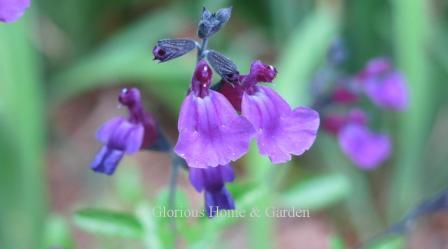 Salvia x jamensis 'Vibe Ignition Purple'
Salvia x jamensis 'Vibe Ignition Purple'Salvia leucantha, velvet sage or Mexican bush sage, Zones 7b-10. Mexican bush sage is treated as a tender perennial or annual in most areas. It flowers profusely from early summer until stopped by frost, producing many spikes of velvety white flowers extending from a lavender calyx. The narrow gray-green leaves are soft as well. Easy to grow in full sun and drought-tolerant. There is also a pink cultivar called ‘Danielle’s Dream,’ and a dark purple that has purple flowers as well as purple calyx called ‘Midnight.’
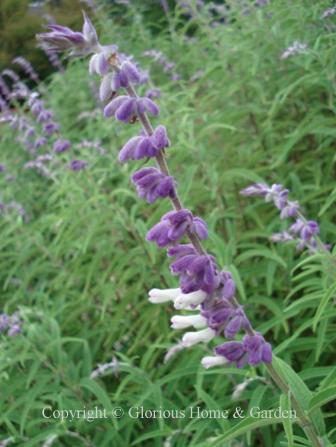 Salvia leucantha
Salvia leucanthaSalvia nemorosa, meadow sage, Zones 3-9. I have seen lots of new meadow sages in nurseries lately, and why not? They are great performers and bloom from late spring into midsummer if deadheaded, and have few disease or insect problems. And the colors, especially the blues and purples. are intense and gorgeous, but they also come in white, wine reds and pinks. ‘Caradonna’ has dark violet flowers on straight dark stems to about 18-24” rising from a clump about 12” h. Color Spires® ‘Crystal Blue’ is a beautiful light blue that combines well with the deep violets. ‘Rose Wine’ has rose pink flowers, Sallyrosa™ ‘April Night’ is a deep violet blue, and Lyrical™ ‘White’ has a long bloom period, and like the others is a great bee, butterfly and hummingbird magnet.
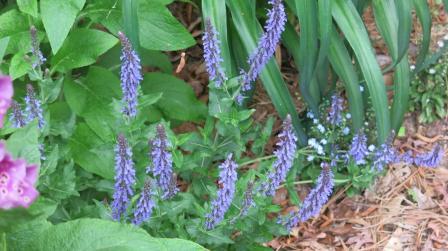 Salvia nemorosa Bordeau™ 'Steel Blue'
Salvia nemorosa Bordeau™ 'Steel Blue'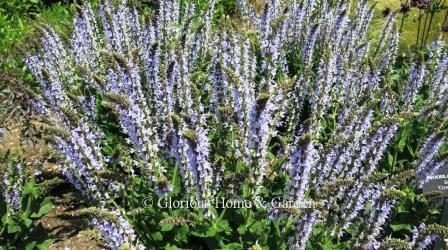 Salvia nemorosa Color Spires® 'Crystal Blue'
Salvia nemorosa Color Spires® 'Crystal Blue'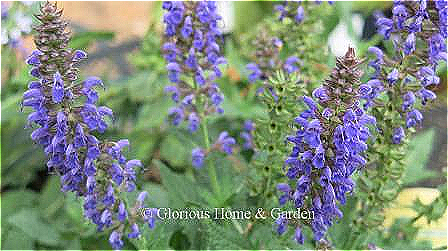 Salvia nemorosa Sallyrosa™ 'April Night'
Salvia nemorosa Sallyrosa™ 'April Night'Salvia x sylvestris ‘May Night,’ hybrid sage, Zones 4-7. Among the hybrid sages, 'May Night,' the 1997 Perennial Plant of the Year®, is one of the best. Deep violet-blue flowers bloom in early to mid-summer and benefit from deadheading the spent blooms to encourage repeat flowering and keep the bees and butterflies hovering.
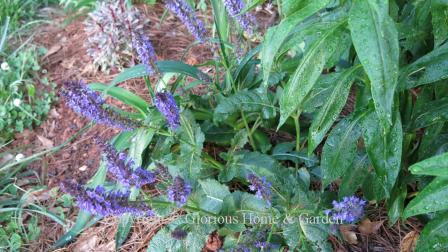 Salvia x sylvestris 'May Night'
Salvia x sylvestris 'May Night'Stokesia laevis, Stoke's aster, Zones 5-9. The species is a Southeastern U.S. native, but it is seldom offered in nurseries as improved cultivars have been developed. The flowers resemble a large cornflower, which is another common name for it, and the foliage is evergreen is milder areas. Bloom time is from late spring to mid-summer and, flower color ranges from blue to purple to yellow to white. Cultivars include: ‘Honeysong Purple’ is dark purple; ‘Mary Gregory’ has soft yellow flowers; ‘Mel’s Blue’ is a medium blue; 'Peachie's Pick' (shown below), has larger flowers of about 3” in blue, and a denser growth habit; ‘Purple Parasols’ is a deep violet-purple; ‘White Star’ is as it is named.
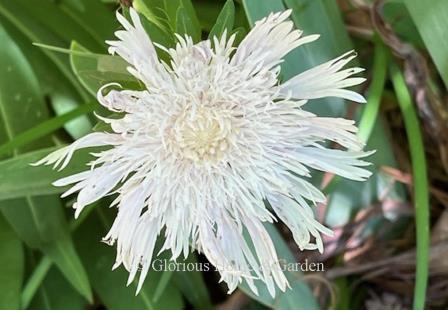 Stokesia laevis 'Alba'
Stokesia laevis 'Alba'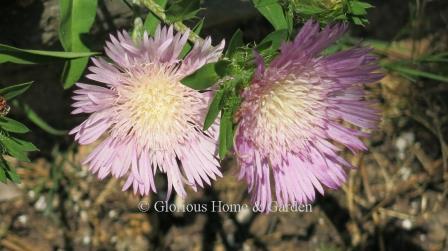 Stokesia laevis 'Color Wheel'
Stokesia laevis 'Color Wheel'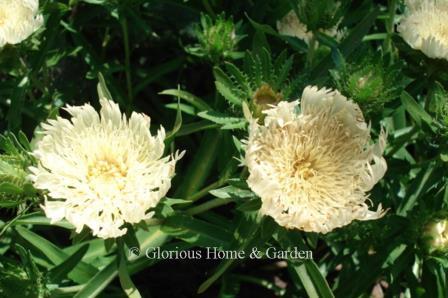 Stokesia laevis 'Mary Gregory'
Stokesia laevis 'Mary Gregory'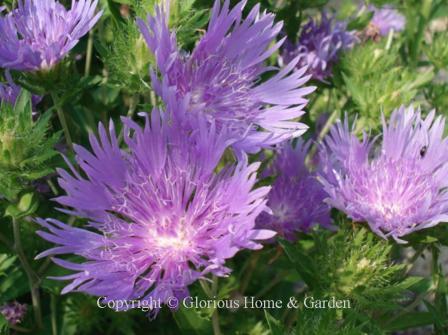 Stokesia laevia 'Peachie's Pick'
Stokesia laevia 'Peachie's Pick'Thalictrum rochebrunianum, lavender mist, Zones 4-7. Tall, airy and charming, lavender mist is a great choice for the back of the border in sun or light shade. It blooms from mid-summer into fall at a time when the garden needs a pick-me-up. The lovely blue-green leaves of this summer perennial remind one of columbine, and the airy flowering stems with many small lavender flowers do take on a lavender haze en masse. Provide plenty of room as these beauties can reach 4-6’ high by 2-3 wide.
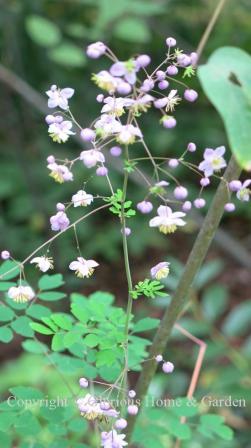 Thalictrum rochebrunianum
Thalictrum rochebrunianumVerbena bonariensis, tall verbena, Zones 6-9. This is a great summer perennial for a sunny location for the airy, see-through quality it has. Tall (3-4’), narrow stems are topped with small purple globes that are a butterfly delight. Great paired with daylilies, phlox, coneflowers and yarrows. It does best in full sun with good drainage, and is drought-tolerant. Tall verbena has a tendency to self-seed in the garden and will pop up in unexpected places which can either be charming or a nuisance depending on your point of view, but easily pulled out if over-proliferating.
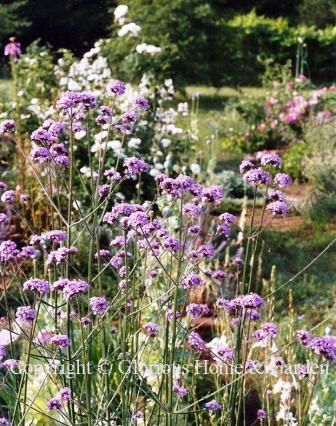 Verbena bonariensis
Verbena bonariensisVerbena canadensis, see Glandularia canadensis.
Veronicas
Veronica longifolia, long-leaf speedwell, Zones 4-8. V. longifolia has long, narrow, toothed leaves on plants that reach 2-4’. Best grown in full sun for sturdier plants. If I were to try to emulate the classic White Garden at Sissinghurst, Veronica longifolia ‘Icicle’ would definitely be included. Tall spires of pure white open from the bottom up all summer and look best planted in front of something darker to show it off. Other cultivars include ‘Blue Giant,’ lavender-blue; ‘Charlotte,’ white; ‘Eveline,’ reddish-purple; ‘Very Van Gogh,’ dark purple.
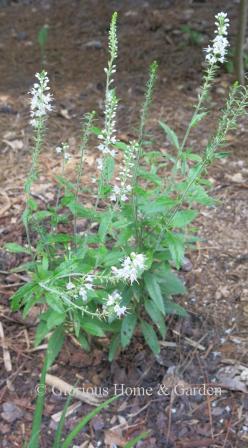 Verbena longifolia 'Icicle'
Verbena longifolia 'Icicle'Veronica spicata, spiked speedwell, Zones 3-7. V. spicata is similar to V. longifolia, but is generally shorter and more compact. Both do best in full sun with good drainage and the bloom season can be extended by regular deadheading. Colors range from deep purple, red-purple, pink, blue to white. Cultivars include: ‘Glory,’ also knows as ‘Royal Candles,’ is a compact variety with dense, dark purple racemes rising in summer to about 12” from a low foliage clump; Magic Show® ‘White Wands,’ is a white hybrid; ‘Noah Williams’ has variegated foliage in addition to white flowers; ‘Red Fox,’ reddish-purple.
Veronica ‘Sunny Border Blue,’ a hybrid between V. longifolia and V. spicata was named the 1993 Perennial Plant of the Year®.
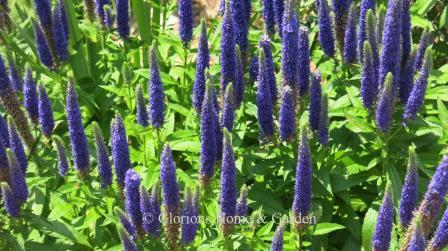 Veronica 'Royal Candles'
Veronica 'Royal Candles'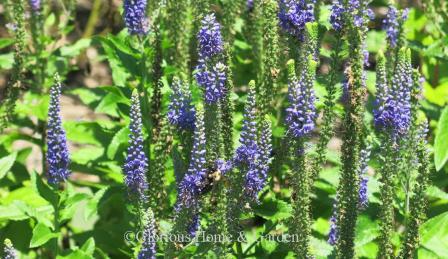 Verbena x 'Sunny Border Blue'
Verbena x 'Sunny Border Blue'Veronicastrum virginicum, culver’s root, Zones 4-8. This Eastern North American native is a nice touch for the late summer into fall border. Growing from 4-6’ tall, topped with candles of white, it makes a statement. Best grown in full sun for more erect, sturdier growth.
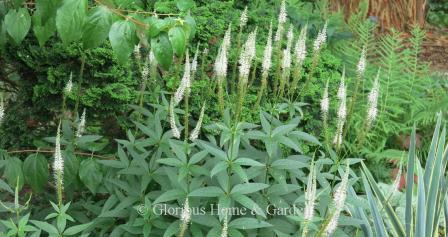 Veronicastrum virginicum
Veronicastrum virginicumPlant of the Month
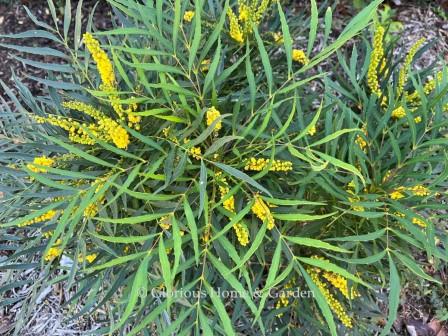
Mahonia eurybracteata
'Soft Caress'
Updated new USDA Plant Hardiness Zone Map 2023.